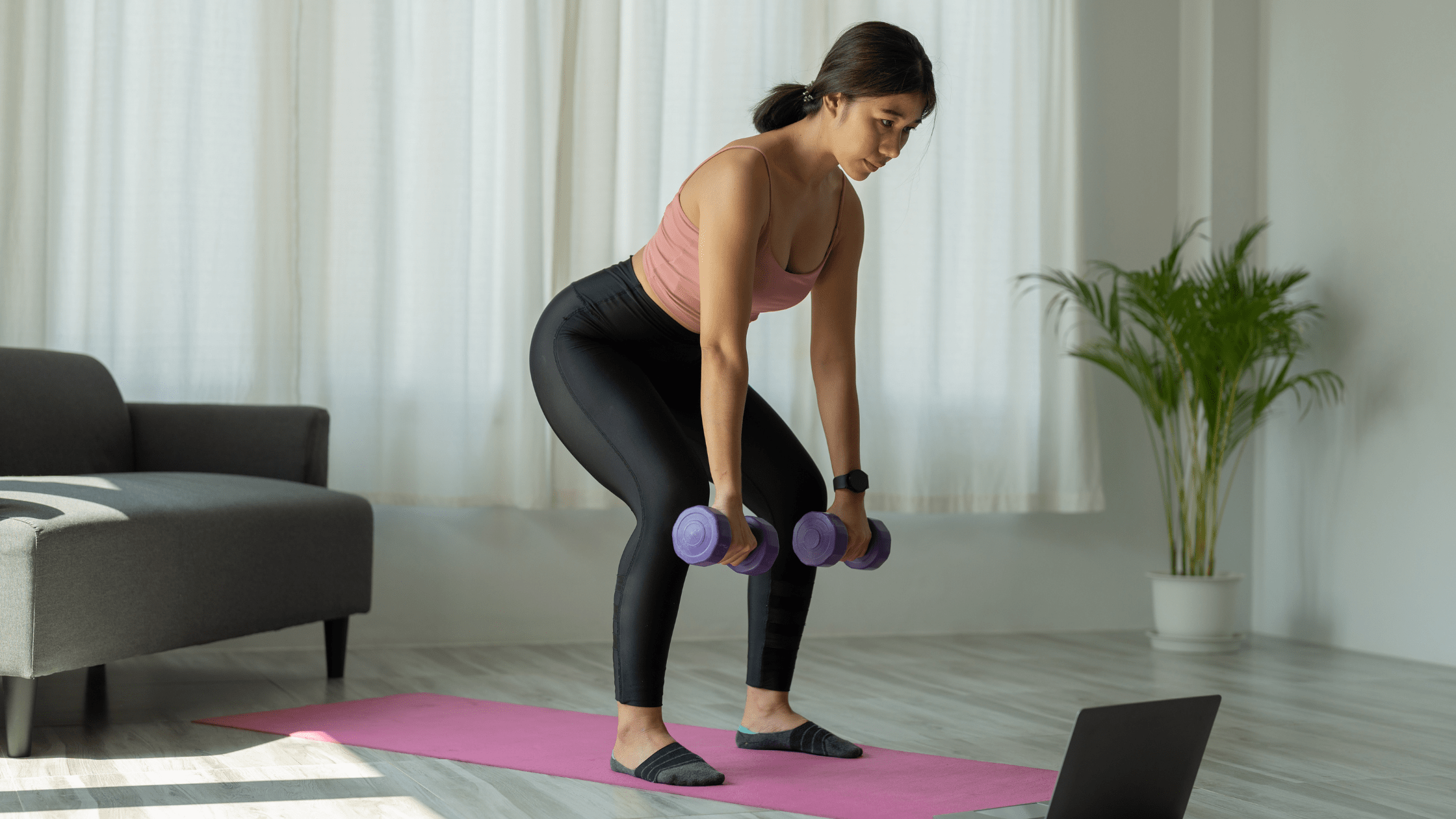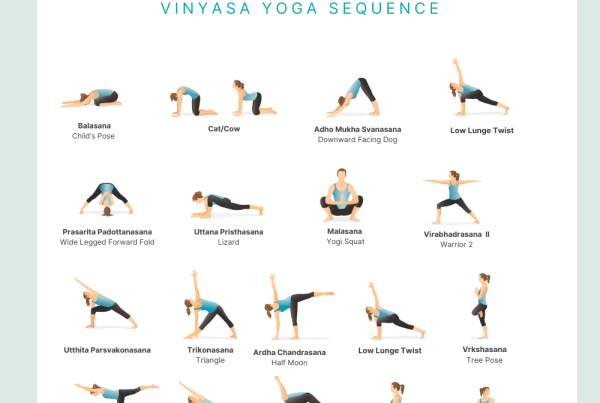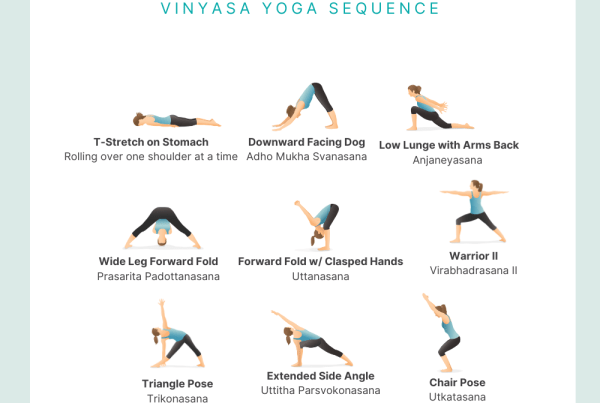
When considering how you can incorporate a yoga practice into your regular fitness routine, it can seem complicated… but it doesn’t have to be. A lot of people like to engage in different physical fitness activities, and sometimes that can mean a multitude of vastly different modalities with varying intensities.
Here is an example of how I like to work out weekly:
- Monday: 60 Min. Cycle Class
- Tuesday: 60 Min. Strength Training
- Wednesday: 60 Min. Yoga Class
- Thursday: 5K Run (3 Miles)
- Friday: 45 min High Intensity Strength + Conditioning Session
- Saturday: 75 minute Yoga Class
- Sunday: Rest
This is an example of how I may spend one week of working out, but it is based on what I could potentially do in a single week according to the activities that I currently participate in. What I am trying to demonstrate is that when it comes to our health and fitness, there are so many options and varying ways to piece them together.
A question that might come up is, “How do we approach fitting in multiple fitness modalities into our lives? How do we get better within each mode if we’re constantly spreading ourselves out?”
Your body, like anything else, has a particular tolerance for capacity. This capacity can be increased given that we dedicate time, effort and energy to do so. When it comes to the example I gave above of my hypothesized week in fitness, I’m spreading myself out a lot. My time, effort, and energy are going towards many activities as opposed to being focused on one particular activity.
Assuming you are paying attention to your body, breath, and form within each class, it’s said to be healthy to fully embrace whatever means of physical movement you enjoy. If nothing else, it is perfectly safe and effective in getting you to just simply move and feel your body; to find what resonates most with you.
However, when it comes to optimizing your body, and optimizing your performance the method of trying to fit it all in most likely won’t yield the greatest results.
In order to get stronger, we must work on lifting/moving heavy loads. If we wish to get faster, we must perform exercises which allow us to work on our speed. If we wish to generate more power, we must lift/move heavy loads at high speeds. If we wish to increase our flexibility and mobility, we must perform movements and exercises geared towards those specific components.
If you are someone who feels like you’re at a plateau and you want to see progress in particular areas or if you want to work on performance and optimization in particular areas, then this article is for you…
How does yoga fit in with strength training?
Let’s say we want to do all of the above while simultaneously deepening our yoga practice — Keep in mind, yoga postures can take us to our extreme ranges of motion, positions that are typically not our strongest. Meaning, you might have a strength goal, which is in opposition to the yoga postures you’re aiming to get better at.
How you approach your health and fitness is heavily based upon your goals at any given time.
Your goals determine what takes priority. How you train will determine what your body is capable of achieving. If you want to lift heavy weights (think about working towards your 1 rep maximum for a back squat), you must lift heavy weights regularly, focusing solely on increasing the amount of pounds each time. If you want to work on deep back-bending (think poses like full King Dancer and King Pigeon), you must work on poses and positions that support such a shape. These two things can feel like they are on opposite ends of the spectrum when it comes to the specific physical fitness goal trying to be attained.
Using back squats and king pigeon as an example, I generally would not recommend for someone to be working on both at full capacity at the same time. Why? The muscular actions needed for each are different. Working on a 1RM (1 rep maximum) back squat requires muscular shortening in places where yoga postures like King Pigeon requires lengthening.
This isn’t to say that if you’re currently working on lifting heavy loads and King Pigeon comes up in class that you should avoid it, but this is to say that your King Pigeon will most likely not feel the best it could if you’re currently working on lifting near max loads in the gym.
Now, I don’t want this to feel limiting. Actually, I want the opposite for you. You can work on all of your goals and expand what your body is capable of in all the ways you wish in a way that is safe, effective, and efficient. It might just take a little bit more time and planning than you initially intended.
Steps towards working on strength + yoga goals:
- Identify and acknowledge the activities you enjoy and want to spend time doing: This can be general because we’re going to get into specific goals in a second. You can approach this like, “I want to participate in yoga, strength training, running, rock climbing, swimming, etc.”
- Determine your goals for the next 6 months to a year: Write them all down. Be more specific here. Approach this like “I want to be able to do a handstand, I want to run a 5K, I want to increase the weight I can deadlift, etc.” If there’s an event you want to participate in like a particular race or competition, this is a good place to write it down. Is time a factor for any of your goals? Perhaps there is a particular race or competition you want to participate in. These generally occur on specific dates. Maybe you are preparing for a trip or life event. Things like going on a trip with a lot of walking or preparing to have kids might be events that you want to think about in preparing your body’s strength and/or conditioning.
- Prioritize your goals: Which goal is most important for you to work towards first? This could be determined by need, time, and/or desire. For example, you might be recently recovered from an injury and now you need to rebuild strength. You might want to compete in a CrossFit Murph workout (occurs every Memorial Day). Depending on the time you have until the intended event, you can determine the priority level for your training efforts. You might have a desire to land in and hold a scorpion handstand. This will create an “ordered list” of what goals take precedence. I want to emphasize that you can work on all your goals at the same time, but this will limit the capacity you reach in each modality. This doesn’t mean your performance will be bad, but it just means you might not be optimizing your performance.
- Acknowledge your goals can change: You might start your strength training journey after injury and discover other strength training goals. You might change your mind and not want to do Murph anymore. You might decide that arm balances and deep backbending are not places you want to deepen your Yoga practice at this time. Nothing is set in stone. If this happens, just reevaluate and tweak.
Plan it out & try to stick to your routine
Get to work! Create a training plan with your goals and intentions in mind, giving each goal the space and time it deserves and follow your plan. Still honor all the activities you enjoy and want to participate in, but focus on your top priority goals with the most effort and intention and be aware that what you train at you will get better at. And remember that if you notice your performance declining in other areas, that it is OK!
And if you need help, know that there are people who are suited just for this kind of thing. Reach out to any instructors, trainers, or coaches whose goal is to help YOU succeed at whatever it is you want to do.










